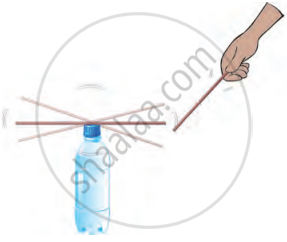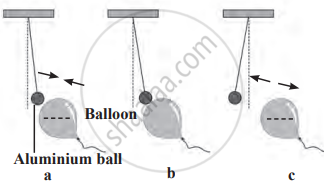1. Aim: To observe how objects (straws) behave when charged by rubbing them with a woollen cloth.
2. Requirements: A few plastic straws, woollen cloth (socks or gloves), and glass bottle
3. Procedure
- Place a straw on a bottle and bring another straw near it. Observe.
- Rub one straw with a woollen cloth and bring it near the straw on the bottle. Observe.
- Rub two straws with the woollen cloth. Place one on the bottle and bring the other near it. Observe if they attract or repel.
- Bring the woollen cloth near the straw on the bottle and observe what happens.
4. Conclusion: Rubbing straws with a woollen cloth creates electric charges. Two charged straws repel each other because they have the same charge, while an uncharged straw may be attracted to a charged one. This experiment shows that friction generates static electricity, causing attraction or repulsion.
Electrically charged objects attract uncharged objects. There is repulsion between electric charges. There is an attraction between them, unlike electric charges. Hence, repulsion is used to identify an electrically charged object.

Changes in the straw
| Procedure |
Repulsion or Attraction |
Inference |
| A charged straw is taken near the uncharged straw. |
Attraction |
Opposite charges attract, or an uncharged object attracts a charged one. |
| Two straws carrying similar charges are brought near each other. |
Repulsion |
Like charges repel each other. |
| A charged straw and the oppositely charged cloth used for rubbing are brought near each other. |
Attraction |
Opposite charges attract each other. |



